The White Jade Reclining Buddha in the Sutra-Keeping Pavilion 2023-02-24
The White Jade Reclining Buddha is also called “Nirvana”. Buddha lies on one’ s side, holding his head in the right hand and keeping the position of sleep. The jade statue presents a white colour, crystal clear manifesting the spirit and aura. The statue was presented by a lay Buddhist from Burma in 1997. It is worshiped in the Sutra-Keeping Pavilion of Shaolin Temple, with a length of 7 meters and a weight of 16.5 tons.
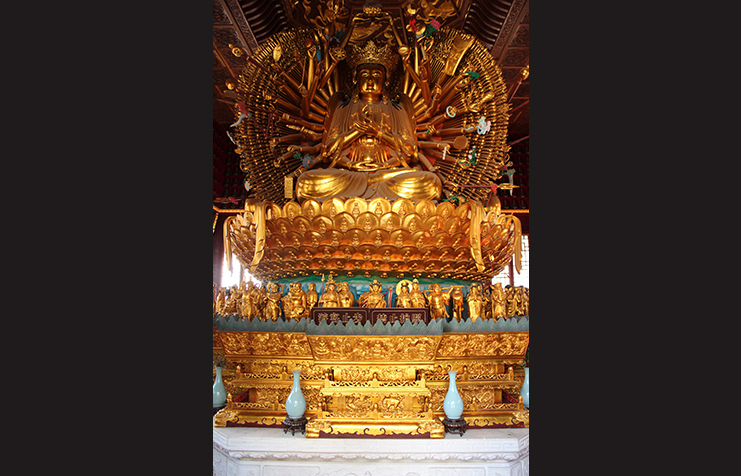
The Four-Face Guanyin with thousand hands and thousand eyes in the Guanyin Pavilion 2023-02-24
The Four-Face Guanyin is wooden, or so 8 meters tall, sitting on the big lotus pedestal. The Guanyin has 40 hands and 40 eyes whose every face has two hands posing over his chest, 20 hands on either side and 1 eye in each hand. It was sculptured in the Ciyun Pavilion (Guanyin Pavilion) in 2005.
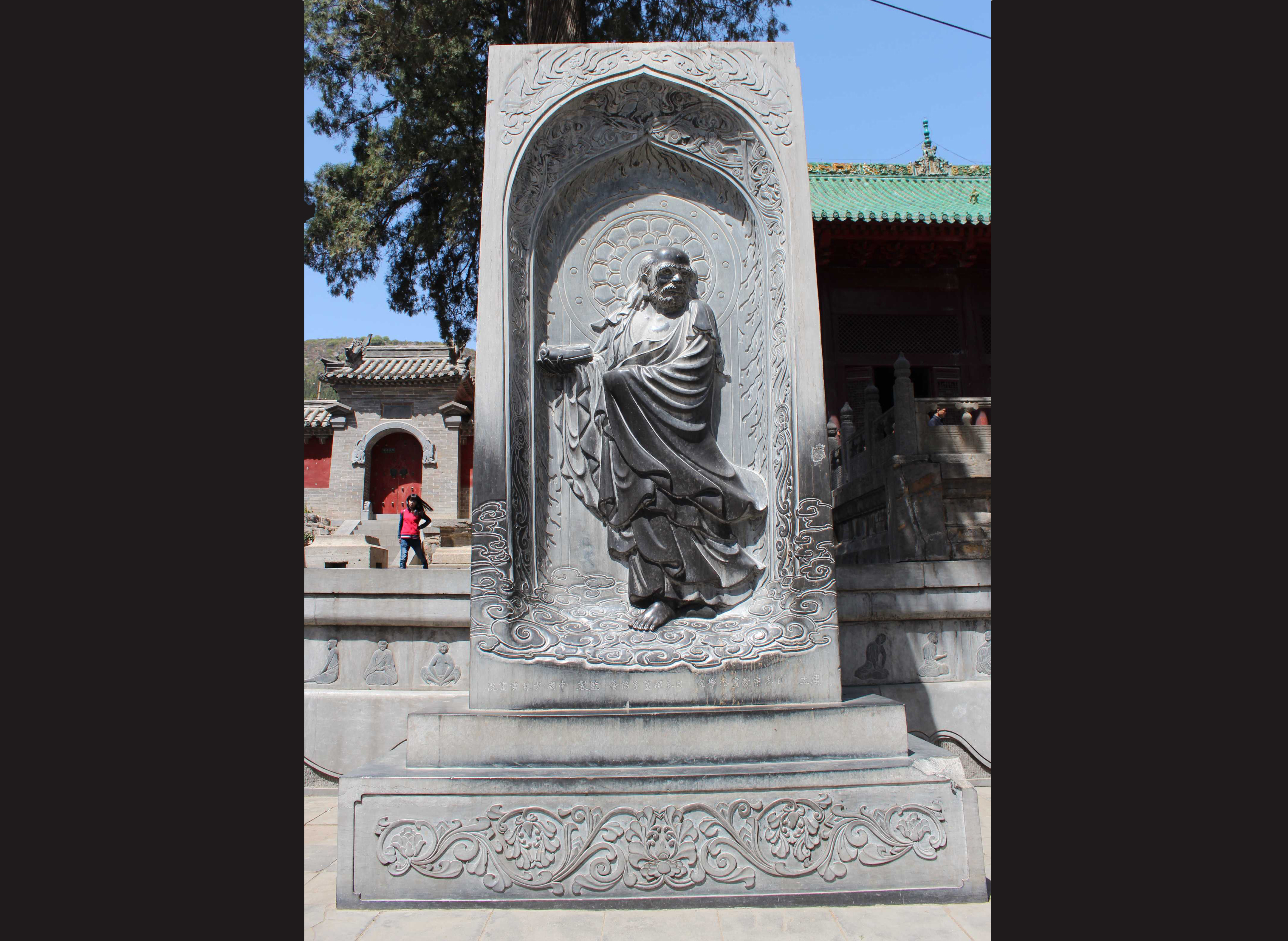
The Statue of Dharma Back to the West with a Straw Shoe in His Hand 2023-02-24
The High relief statue of Dharma back to the West with a Straw Shoe in His Hand is at the Thousand Buddha Hall (West Saint Hall). The big statue of Dharma is 3.6 meters tall, 1.48 meters wide and 0.55 meters thick, sculptured in 2002.
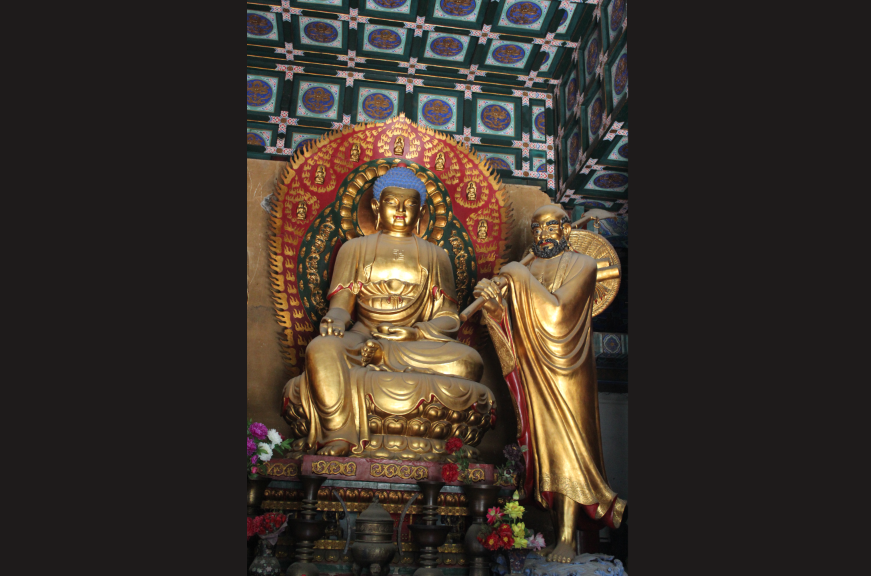
The Statue of Bodhidharma 2023-02-24
Bodhidharma is the primary ancestor of Chan sect in China. His image is nearly developed based on legends and imaginations, popular after the Song Dynasty. His sculpture is usually an image of Hu monk, with bald head, big eyes and bushy eyebrows, square face, big ears wearing large earrings, heavily bearded face and hands holding a cane. Shaolin Temple is the ancestral monastery of Chan sect. Sculptures, statues and paintings of patriarch Dharma whose broad range of topics, unique image, profound mind of Chan and a heavy flavor of life, are a grand view garden of images of Bodhidharma.
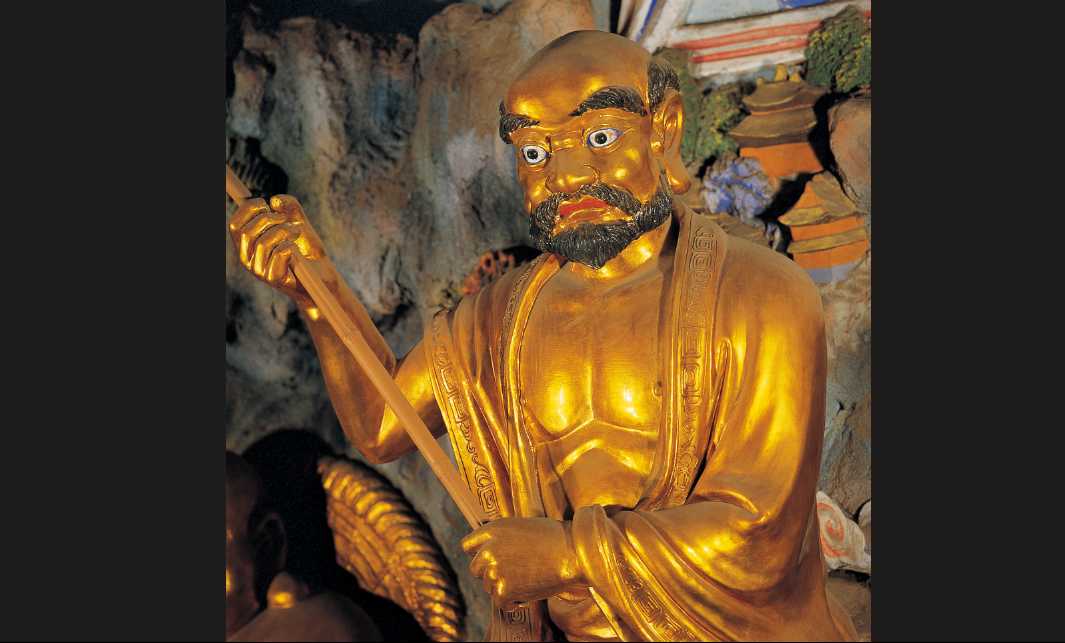
Statues of the Eighteen Arhats at the Mahaviro Hall 2023-02-24
The eighteen arhats’ have vivid figures, different look, square faces, Roman nose, big eyes, thick beard, rising brow ridge, sharp outlines, vigorous patterns of clothes, appropriate ratio and delicate carvings. There are 7 statues with thick beard among them. Though figures of arhats don’ t have beautiful appearance, they own the inner beauty of compassion and solemnness, embodying extraordinary power of discipline, Chan and wisdom. The statues of the eighteen arhats are located on either side of the Mahaviro Hall, sculptured again in 1989 and deigned by Song Shufan.
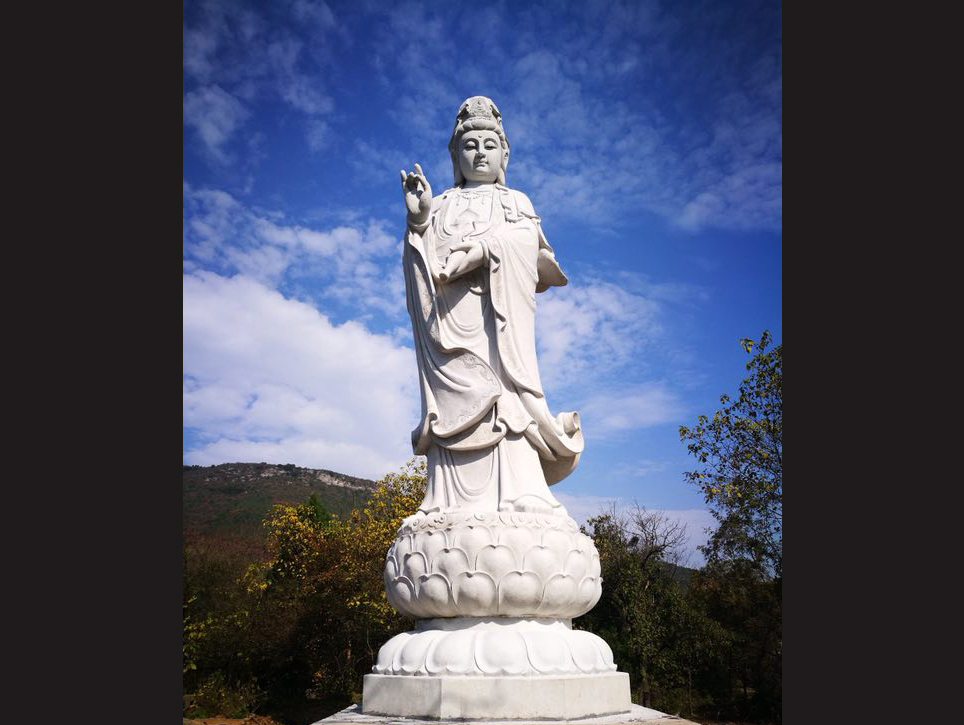
The Statue of Bodhisattva on the Sweet Dew Platform 2023-02-24
The statue of Bodhisattva is located 300 meters west of the Shaolin Temple Permanent Residence Compound, 7.8 meters tall and 100 tons heavy. The whole statue was carved out of white marble. Bodhisattva whose right hand pinches her fingers and left hand holds a treasure bottle, stands on the lotus pedestal, with a solemn, merciful face, embodying vivid pattern.
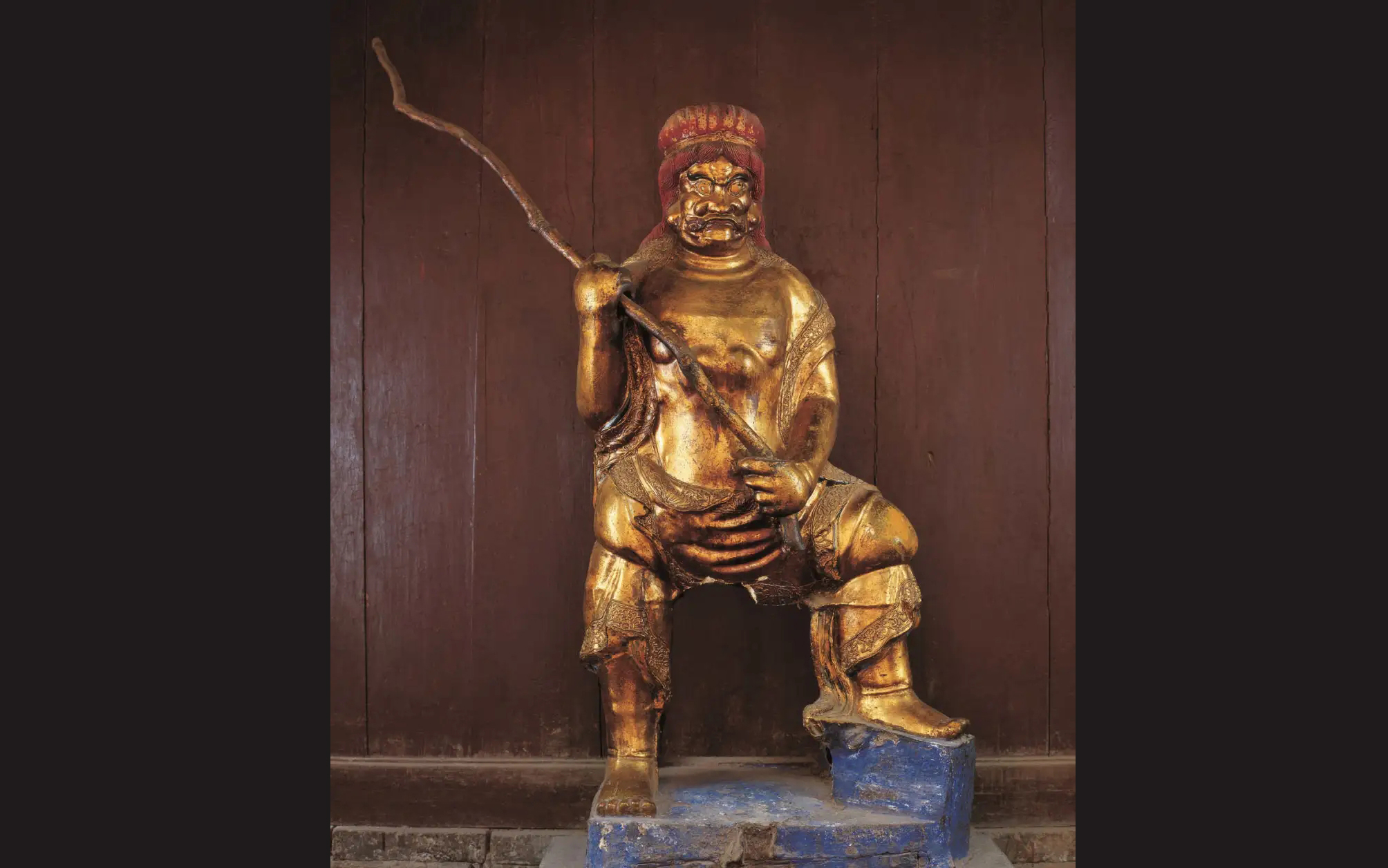
The Iron Statue of Kinnara 2023-02-24
There were originally three figures of Kinnara worshiped at the Kinnara Hall, the copper one on the left side, the rattan in the middle, and the iron on the right side. Unfortunately, the Kinnara Hall had been destroyed by fire in 1928. Then only the iron statue of Kinnara is well preserved until now. To protect cultural relics of the Temple, the statue of Kinnara was painted with golden powder after 1949. The statue is 1 meters tall, a monk hat on his head, hair to his shoulders, glaring eyes wide open, belly and feet bare, and his body anteverted. His hands hold an iron poker and the left foot steps on the gate pier in front of the stove. This image is located behind the Shrine of the Lixue Pavilion, plain, generous and vivid.
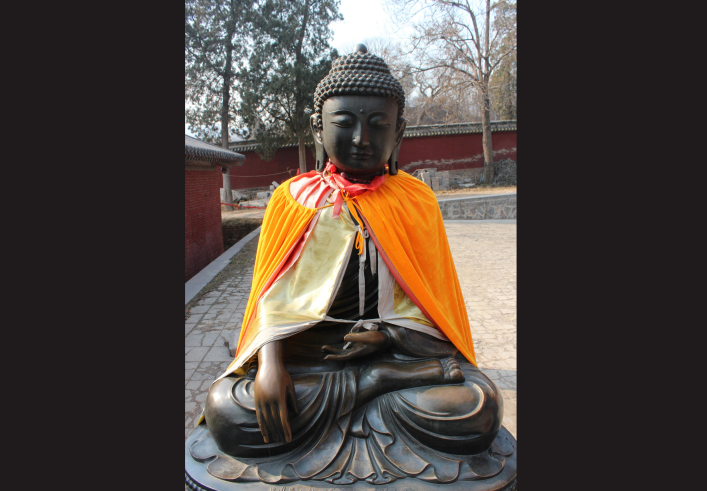
The Bronze Statue of Sakyamuni in the Open Air 2023-02-24
The bronze statue of Sakyamuni, 2.4 meters tall, whose pedestal is 60 centimeters tall, is located in the south of the Drum Tower. Chinese characters “中国嵩山少林寺,释永信” were carved on the Sumeru seat, Shaolin disciples’ name on the back, cast in the year of 2550 according to the Buddhistischer Kalender.
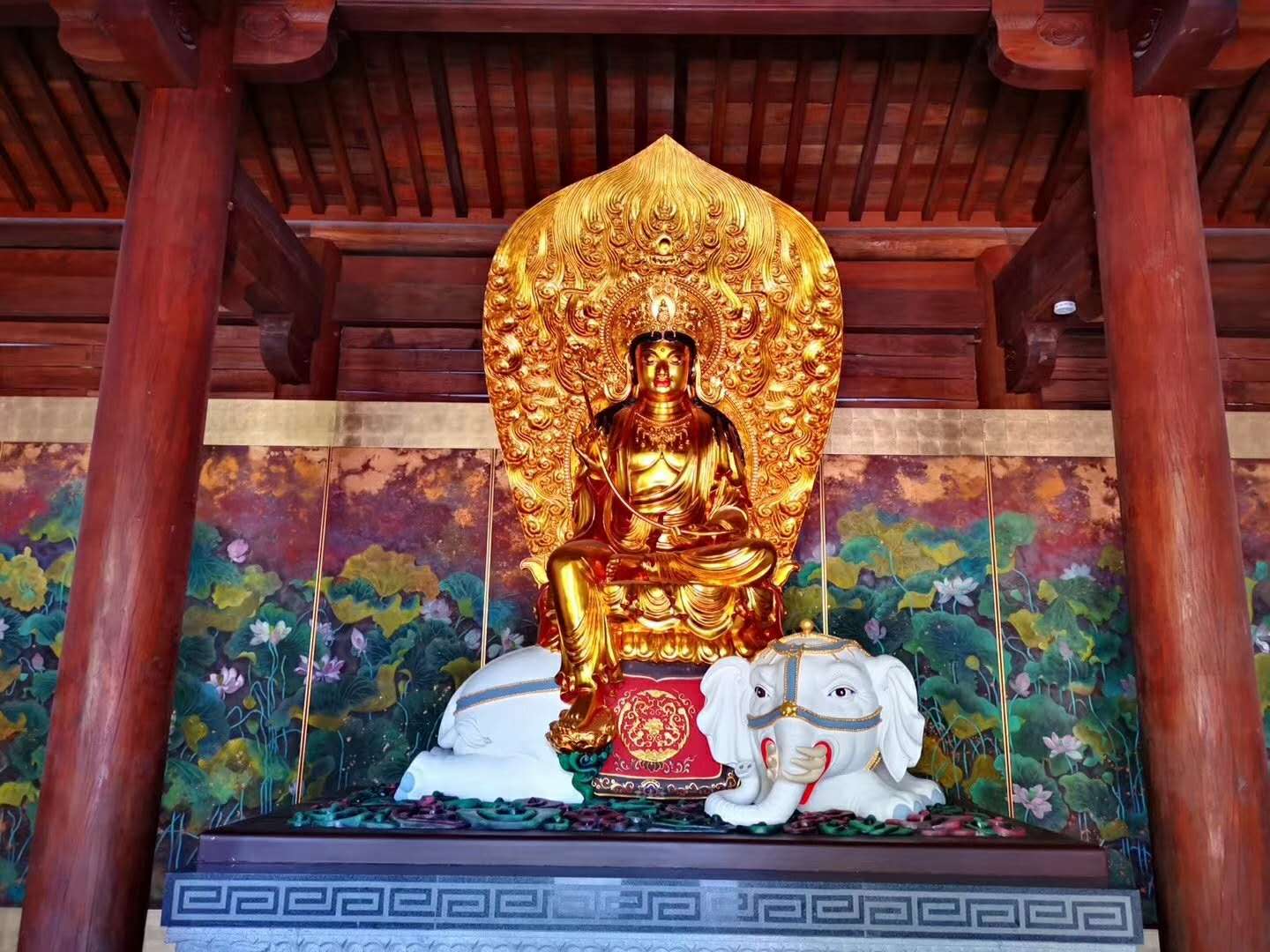
The Statue of Samantabhadra at the Samantabhadra Hall 2023-02-24
The Samantabhadra Hall is located on the left side of the Lixue Pavilion, and the opposite side of the Manju Hall. The Manju Hall is three-room width, worshiping the statue of Samantabhadra Bodhisattva riding a white elephant sculptured in 1995. His two attendants is on either side of the statue. The white elephant is Samantabhadra Bodhisattva’ s mount who has a white body, six teeth, and four feet stepping on the three-feet lotus throne. Samantabhadra Bodhisattva sits on the elephant’s back, holding Ruyi in his hands.
The Statue of Skanda at the Mountain Gate 2023-02-24
The statue of Skanda is located behind the Maitreya Buddha,in the appearance of a Chinese general, with one hand on hip and the other hand holding a vajra pestle supported, eyes showing deterrent force, in majestic golden armor. The vajra pestle is supported implying not receiving Buddhists at the temple for a short stay. Chinese temple began worshiping Skanda since the Song Dynasty.And this statue of Skanda is wooden.
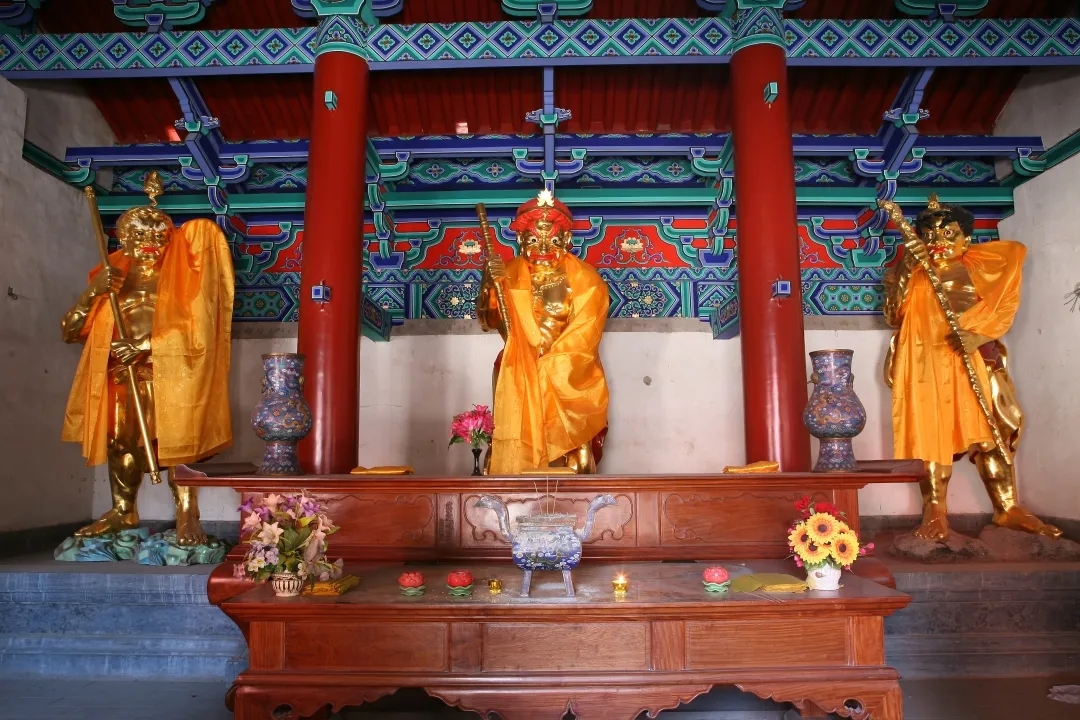
The Statues at the Kinnara Hall 2023-02-24
Three statues of Kinnara had been worshiped at the Kinnara Hall, the hand-made rattan one in the middle, the copper left and the iron right. The three statues were so singular and majestic. The Kinnara Hall was destroyed in 1928, only the iron statue of Kinnara preserved. Three statues of Kinnara including protection dharma, magic dharma and holding dharma were re-shaped in 2005. The iron statue of Kinnara is 2.6 meters high, with dishevelled hair and a dirty face, holding a big poker in hands, his body leaning forward, and a majestic appearance. The statue is worshiped at the Kinnara Hall.
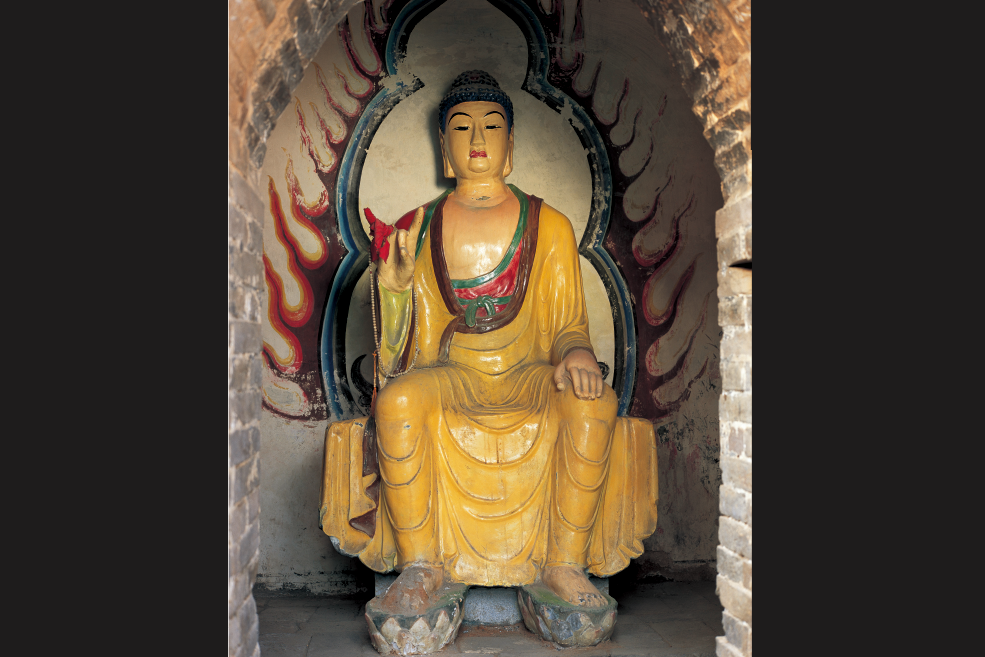
The Stone Statue of Buddha Sakyamuni 2023-02-24
The statue is located in the Buddha Sakyamuni Pagoda, 1.6 meters tall, 1.6 meters around the waist, sitting with his legs dropping naturally, spiral hair tied on his head, in Buddha clothes. The closed fingers of his left hand on his knee, the right thumb and forefinger are closed and index finger extended. He peacefully sit on the pedestal of Buddha, 1 meters long and 0.48 meters wide, with a well-rounded posture. This statue is not sitting cross-legged but legs dropping naturally, his two feet landed, lightly leaning against the skirt’ s hemline before the pedestal of Buddha, which is his outstanding feature, and so different from other statues. According to inscriptions sculptured in Yuanyou two years (1087 AD) of the Song Dynasty behind the pagoda,the statue had been hidden underground during Huichang years of Emperor Wuzong of Tang’s ruling, and later was found and known to the world. This is one existing statue of Buddha with the highest value of cultural relics in Shaolin Temple.
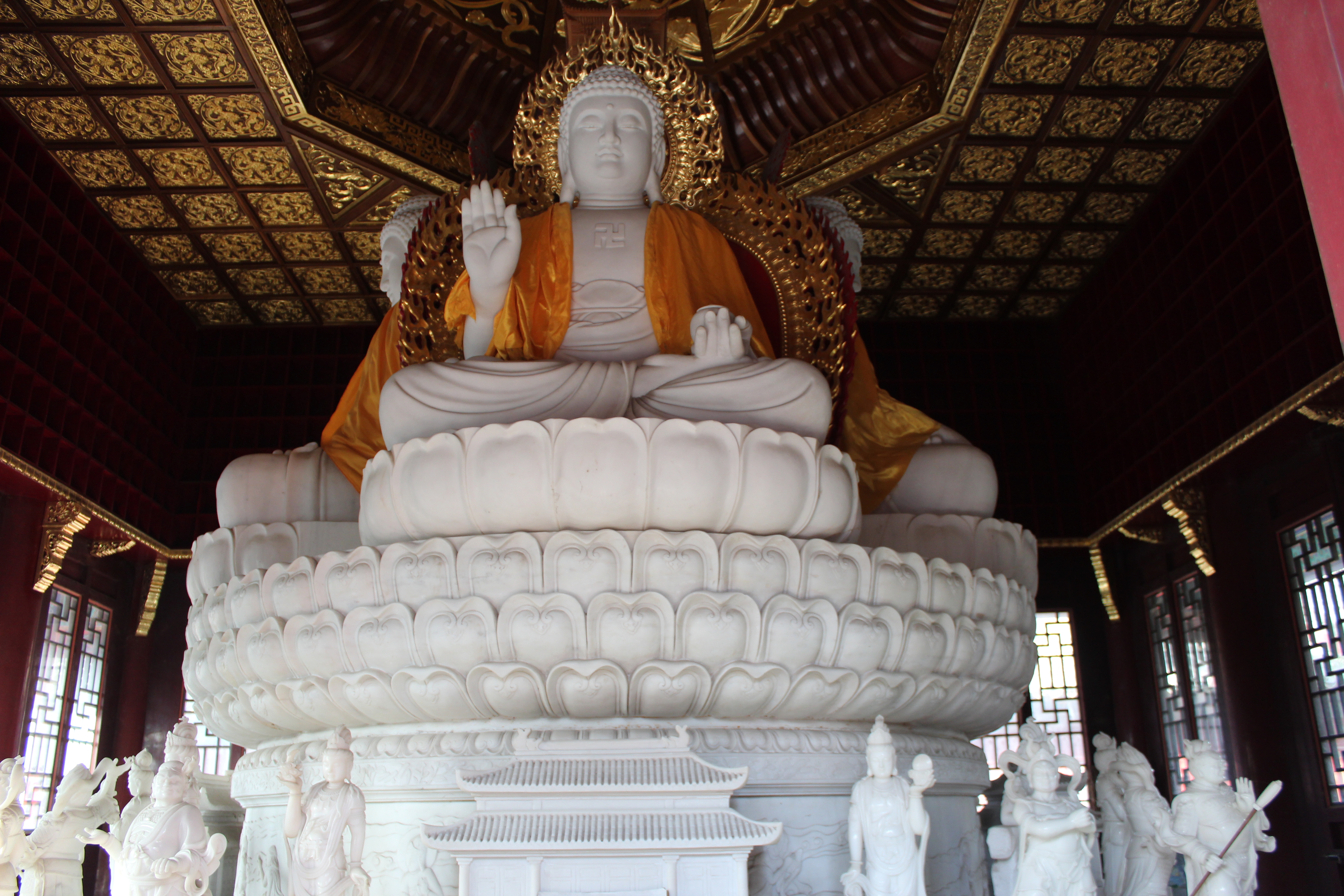
The Statue of Medicine Guru Buddha at the Xilai Chapel 2023-02-24
The statue of four-face Medicine Guru Buddha is jade, sitting on the large exquisite lotus pedestal, around 8 meters tall. The statue, Sitting cross-legged, grand and beautiful,is a rare fine work, sculptured in 2005, located at the Xilai Chapel(the Medicine Guru Pavilion).

The Statue of Manjushri Bodhisattva at the Manjushri Hall 2023-02-24
The Manjushri Hall is located in the east of the Lixue Pavilion, facing the west, the opposite of the Samantabhadra Hall. The statue of Manjushri Bodhisattva riding a green lion sculptured in 1995 is worshiped, two boys cast standing on either side. Bodhisattva Manjushri, Guanyin, Samantabhadra and Ksitigarbha are collectively called four great Bodhisattvas.It is said that Bodhisattva Manjushri’ s wisdom is supreme among these bodhisattvas and thus also called the Greatly Wise Manjushri Bodhisattva. Manjushri rolls up his hair in five buns, holds ruyi in hands, sits on the lotus pedestal, rides a lion symbolizing wisdom, sharp and strength. His venerable name was Dazhi Manjushri (Bodhisattva with great wisdom). Shadow Stone for Dharma was offered in the glass cabinet in the south of the Manjushri Hall, 3 feet tall, smooth like a pebble, copied and carved by posterity. The original Manjushri Hall had been destroyed in the late Qing Dynasty, and the existing was rebuilt in 1983.

The Bronze Statue of Buddha Vairocana at the Thousand-Buddha Hall(the statue of Buddha Vairocana at the West Saint Hall) 2023-02-24
The statue, 6 meters tall, is located in a large wooden shrine of the hall that was made in the fifteenth year of the Qing Dynasty’ s emperor Qianlong (in 1750). The Bronze Statue of Buddha Vairocana was made in Wanli 16 years of the Ming Dynasty (in 1588), 2.5 meters tall, dressed in a cassock, exposing his chest and belly, sitting on the upturn lotus with his legs crossed, head wearing a crown, his face like a full moon, a broad shoulder and a slender waist, a majestic air, set on a thousand-leaf lotus pedestal. The statue, made delicately,is a fine work of art cast in the Ming Dynasty.
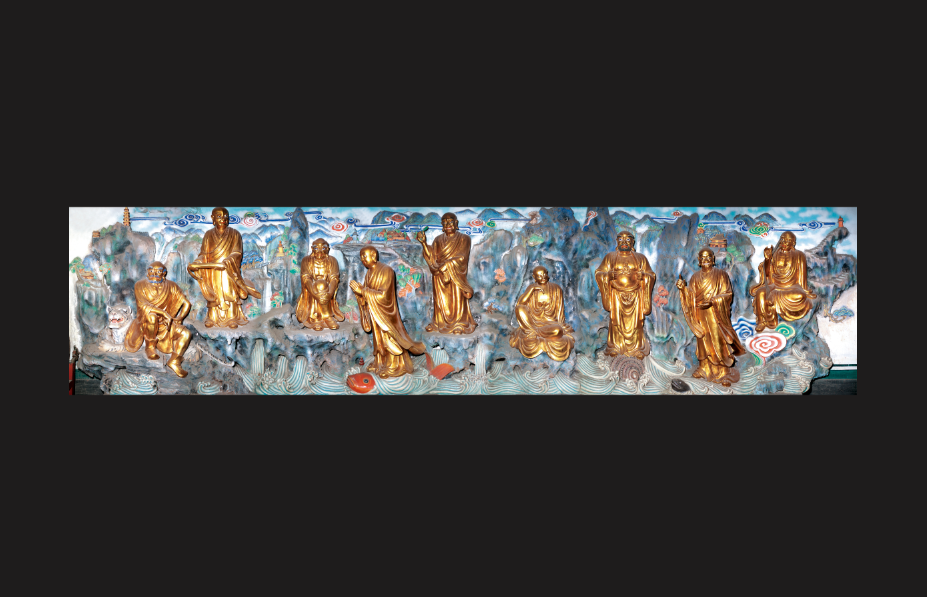
Statues of the Eighteen Arhats at the Mahaviro Hall 2023-02-24
The eighteen arhats’ have vivid figures, different look, square faces, Roman nose, big eyes, thick beard, rising brow ridge, sharp outlines, vigorous patterns of clothes, appropriate ratio and delicate carvings. There are 7 statues with thick beard among them. Though figures of arhats don’ t have beautiful appearance, they own the inner beauty of compassion and solemnness, embodying extraordinary power of discipline, Chan and wisdom. The statues of the eighteen arhats are located on either side of the Mahaviro Hall, sculptured again in 1989 and deigned by Song Shufan.